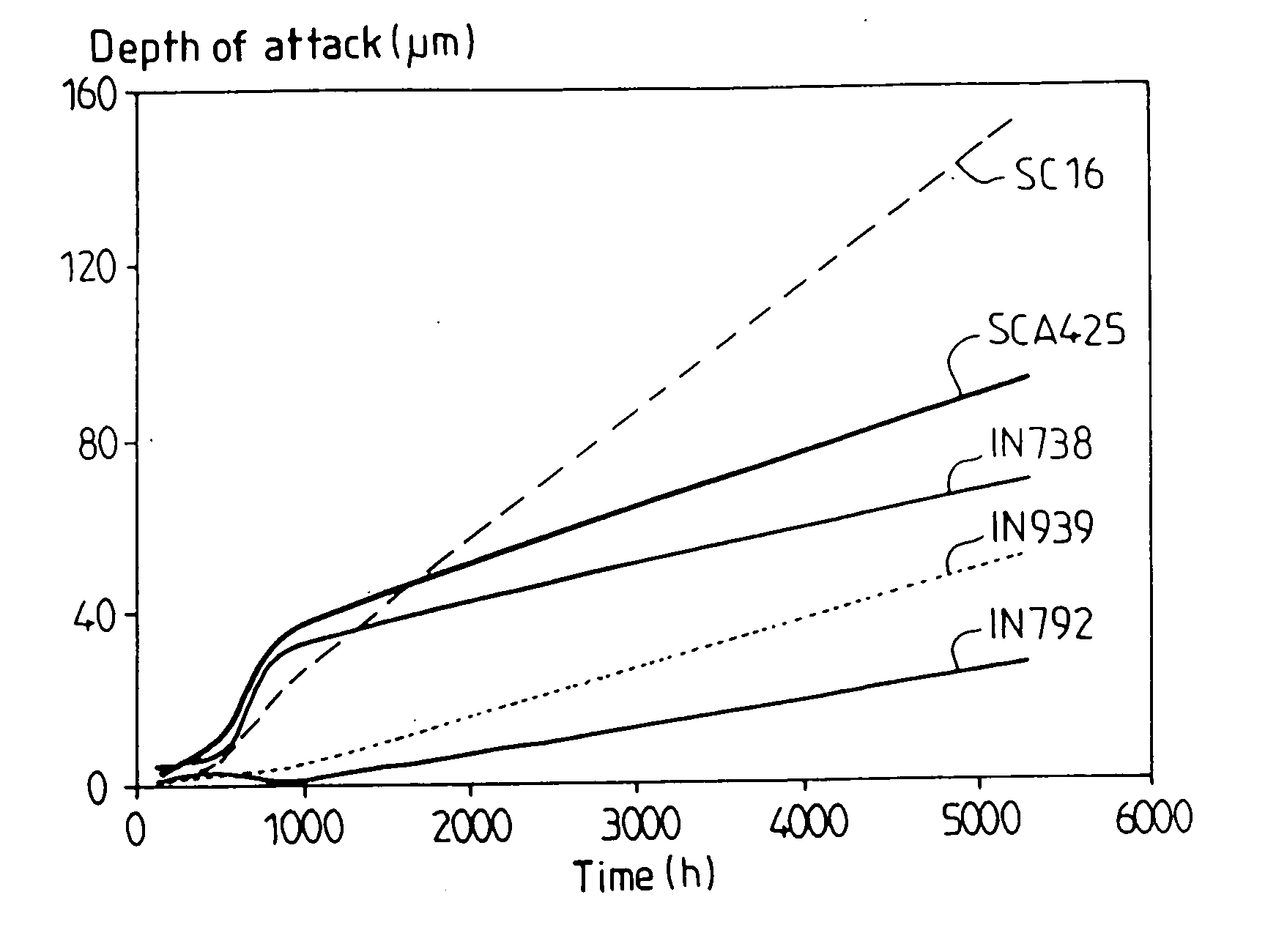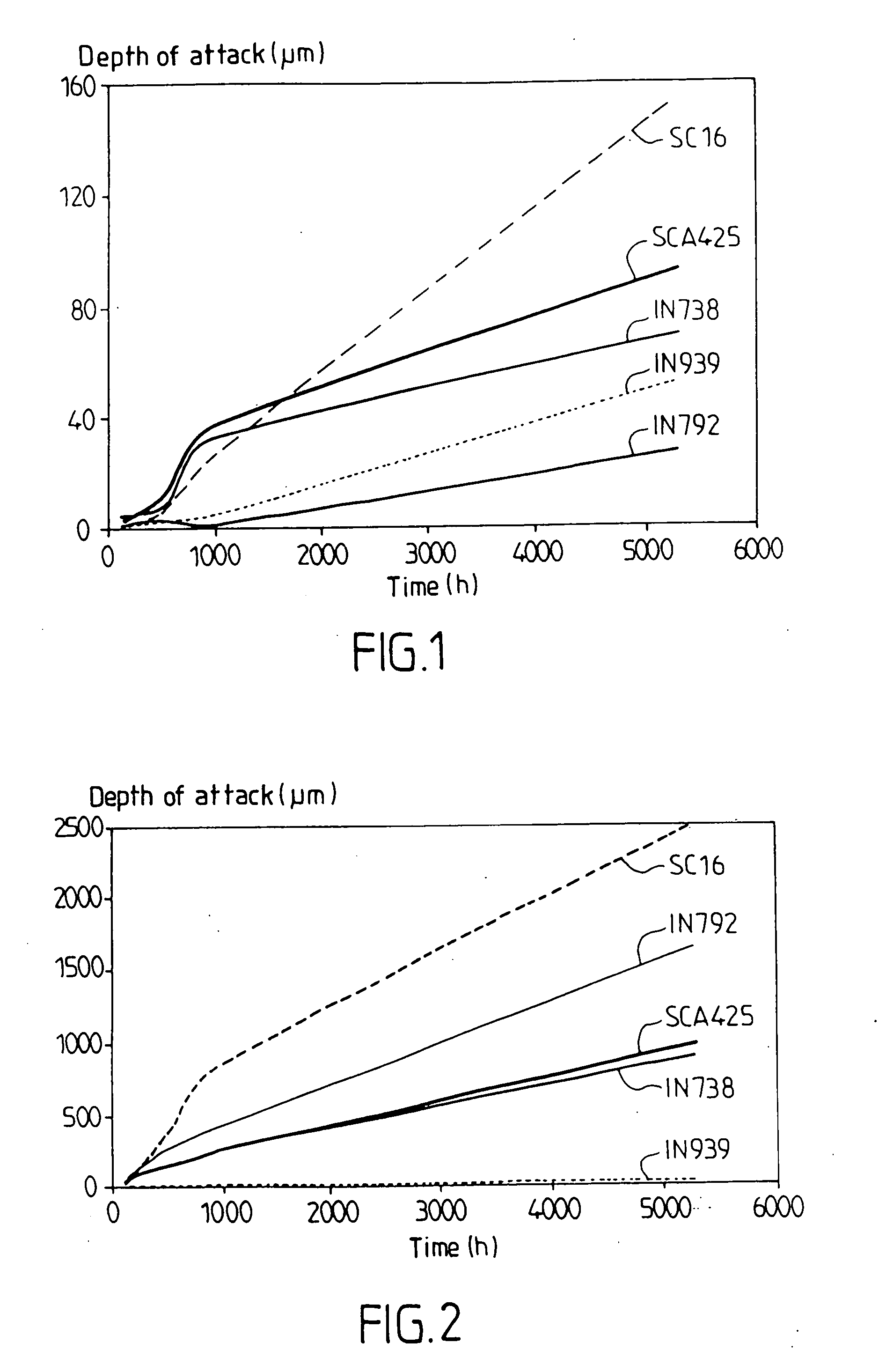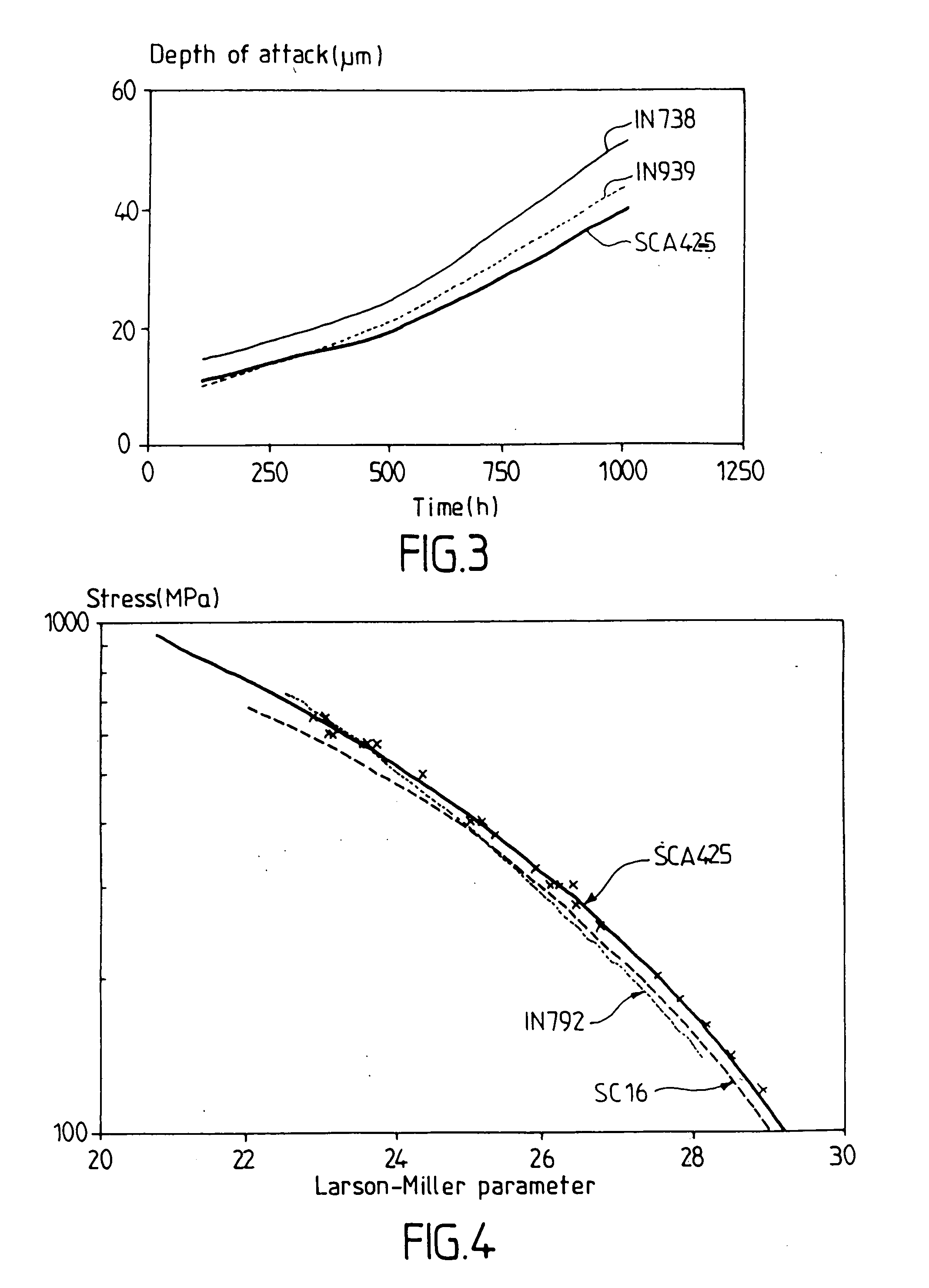Nickel-based superalloy having very high resistance to hot-corrosion for monocrystalline blades of industrial turbines
a technology of industrial turbine blades and superalloy compounds, which is applied in the direction of engines, mechanical equipment, machines/engines, etc., can solve the problems of the most disadvantageous turbine blade types, the inability of monocrystalline turbine blades developed for aeronautical applications to meet the needs of blades for terrestrial or marine applications, and the type of problem posed by the turbine blade. achieve good micro-structural stability
- Summary
- Abstract
- Description
- Claims
- Application Information
AI Technical Summary
Benefits of technology
Problems solved by technology
Method used
Image
Examples
Embodiment Construction
[0028] An alloy according to the invention designated SCA425 has been produced with reference to the nominal composition listed in Table I. In this table, the nominal concentrations of major elements of reference alloys IN939, IN738, IN792 and SC16 are also listed.
TABLE IConcentrations by weight of major elements (%)AlloyNiCoCrMoWAlTiTaNbIN939Base1922.5—21.93.71.41 IN738Base8.5161.72.63.43.41.70.9IN792Base912.41.93.83.14.53.9—SC16Base—163—353.53.5—SCA425Base51614425—
[0029] Chrome has an advantageous and dominant effect on the resistance to hot-corrosion of nickel-based superalloys. Thus, tests have shown that a concentration in the order of 16% by weight was necessary in the alloy of the invention in order to obtain resistance to hot-corrosion that is equivalent to that of reference alloy IN738 under the conditions for hot-corrosion tests described below, which conditions are representative of the environment created by combustion gases of some industrial turbines. Chrome also co...
PUM
| Property | Measurement | Unit |
|---|---|---|
| Temperature | aaaaa | aaaaa |
| Temperature | aaaaa | aaaaa |
| Temperature | aaaaa | aaaaa |
Abstract
Description
Claims
Application Information
 Login to View More
Login to View More - R&D
- Intellectual Property
- Life Sciences
- Materials
- Tech Scout
- Unparalleled Data Quality
- Higher Quality Content
- 60% Fewer Hallucinations
Browse by: Latest US Patents, China's latest patents, Technical Efficacy Thesaurus, Application Domain, Technology Topic, Popular Technical Reports.
© 2025 PatSnap. All rights reserved.Legal|Privacy policy|Modern Slavery Act Transparency Statement|Sitemap|About US| Contact US: help@patsnap.com



